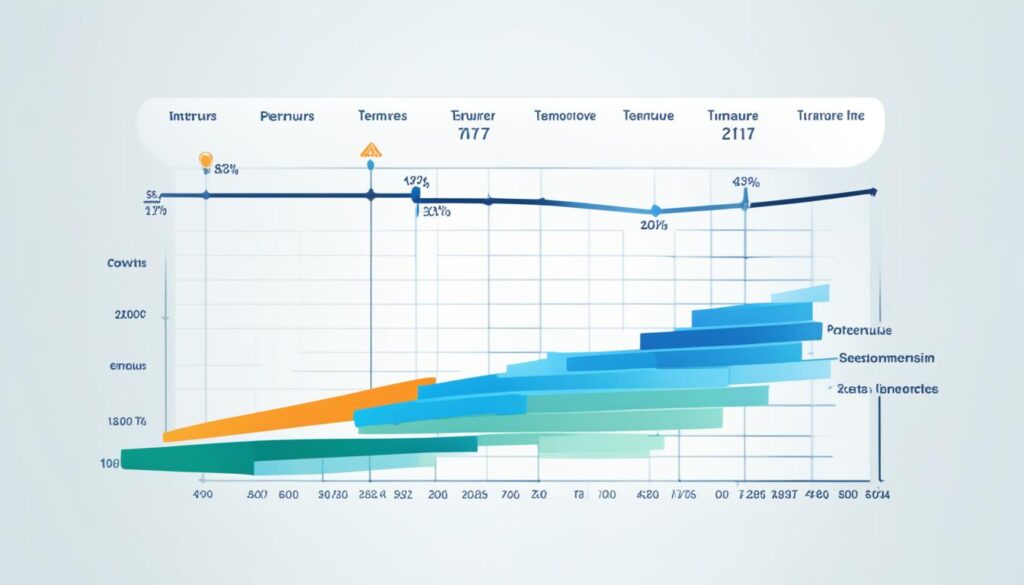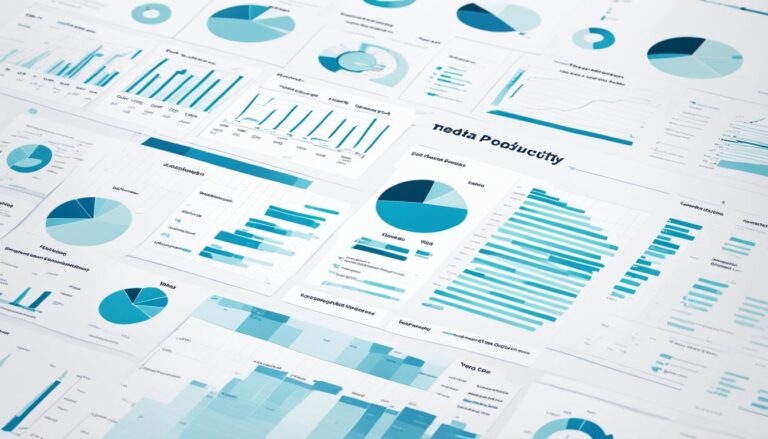Boost Your Team’s Success: Measure Employee Productivity

Are your team’s efforts translating into success? Do you know how to measure the productivity of your employees effectively? Understanding and quantifying employee productivity is crucial for optimizing team performance and achieving your organization’s goals. In this comprehensive guide, we will explore proven strategies and techniques to measure employee productivity and drive your team towards unprecedented success.
Discover how to unlock the true potential of your team, identify areas for improvement, and make data-driven decisions that will transform your organization. Are you ready to take your team’s productivity to new heights? Let’s dive in!
Understanding Workplace Productivity
Before you can effectively measure productivity, it is important to understand the concept and definition of productivity. Productivity can be defined as the measure of how efficiently resources or goods are created. It is a key indicator of an organization’s efficiency and success.
Traditionally, productivity measurement focused on various factors such as time spent at work or online, achieving key performance indicators (KPIs) and goals, and cost metrics. These metrics provided insights into the output and performance of individuals, teams, and the organization as a whole.
However, it is important to differentiate between productivity and efficiency. While productivity focuses on the quantity of work done, efficiency places weight on resource optimization and minimizing waste. Efficiency measures how effectively resources are used to achieve a specific outcome.
When considering productivity, it is crucial to take into account both quantity and quality of work. A highly productive employee or team consistently achieves their goals efficiently and effectively.
Image:
Productivity Measurement Methods
There are various methods available to measure productivity in the workplace, each with its own advantages and limitations. Some common productivity measurement methods include:
- Output-based measurement: This method focuses on quantifying the output or outcomes of work. It involves measuring the number of tasks completed, projects delivered, or products produced within a given time frame.
- Time-based measurement: This method tracks the amount of time or effort invested in completing work. It involves measuring hours worked, time spent on specific tasks, or the utilization of resources.
- Goal-based measurement: This method evaluates productivity based on the achievement of predefined goals or targets. It involves setting clear objectives and tracking progress towards their attainment.
It is important to choose the measurement method that aligns with the specific goals and objectives of your organization. Combining multiple measurement methods can provide a more holistic view of productivity.
Productivity vs Efficiency
While productivity and efficiency are closely related concepts, they have distinct differences:
| Productivity | Efficiency |
|---|---|
| Focuses on output | Focuses on resource optimization |
| Measures quantity of work done | Measures effectiveness of resource use |
| Emphasizes achieving goals | Emphasizes reducing waste |
| Evaluates overall performance | Evaluates resource utilization |
Understanding the distinction between productivity and efficiency is essential for effectively measuring and managing both aspects in the workplace.
Now that we have explored the concept of productivity and its relationship with efficiency, let’s dive deeper into the benefits of measuring productivity in Section 3.
Benefits of Measuring Productivity
Measuring productivity provides numerous benefits for organizations. By implementing effective productivity metrics, you can gain valuable insights into your team’s performance and identify areas for improvement. Let’s explore the importance of measuring productivity, the key productivity metrics to consider, and the link between employee satisfaction and productivity.
The Importance of Measuring Productivity
Measuring productivity is crucial for optimizing team performance and achieving organizational success. It allows you to:
- Identify Productivity Gaps: By measuring productivity, you can identify inefficiencies and areas where improvements are needed. This data-driven approach helps you understand the specific factors affecting productivity and take targeted actions to address them.
- Make Informed Decisions: Productivity metrics provide valuable insights that enable you to make informed decisions. When you have accurate data on individual and team performance, you can allocate resources more effectively, streamline processes, and implement strategies that drive productivity.
- Acknowledge High Performers: Measuring productivity allows you to identify and acknowledge high-performing employees. Recognizing and rewarding their efforts not only boosts morale but also motivates others to improve their productivity levels, creating a culture of excellence.
The Link Between Employee Satisfaction and Productivity
Research has established a clear link between employee satisfaction and productivity. When employees are satisfied, they are more likely to be engaged, motivated, and committed to their work. On the other hand, disengaged or dissatisfied employees are prone to low productivity and poor performance.
Creating a work environment that fosters employee satisfaction is key to driving productivity. Factors such as flexible work options, effective tools, and a positive work culture contribute to higher levels of job satisfaction. By measuring productivity, you can gain insights into employee satisfaction levels and create strategies to enhance their overall work experience.

| Benefits of Measuring Productivity | The Link Between Employee Satisfaction and Productivity |
|---|---|
| Identify productivity gaps and areas for improvement | Foster a positive work culture |
| Make data-driven decisions | Create strategies to enhance employee satisfaction |
| Acknowledge high performers | Boost employee engagement and motivation |
How to Measure Productivity
Measuring productivity is crucial for optimizing team performance and achieving success. By quantifying and tracking productivity, you can identify areas for improvement, make data-driven decisions, and foster a culture of continuous improvement. Here are some effective methods to measure productivity:
1. Quantifying Productivity
One approach to measure productivity is by analyzing communication and collaboration within the organization. Tools like Slack can provide valuable data on employee communication and effectiveness. Monitoring the frequency and quality of interactions can give insights into how effectively employees are collaborating and contributing to team goals.
2. Calculating Productivity
Calculating productivity requires considering multiple data points, such as tasks completed, online engagement, responsiveness, and attitude towards new technology. By tracking these metrics, you can gauge the efficiency and effectiveness of individual employees and the team as a whole. This data can be collected through project management tools, time tracking software, and performance evaluations.
3. Monitoring and Tracking Productivity
Monitoring and tracking productivity can be accomplished through setting goals with employees, maintaining an open-door policy, and rewarding high performers. By establishing clear expectations and tracking progress towards objectives, you can ensure accountability and motivate employees to reach their full potential. Regular performance evaluations and constructive feedback sessions are important for continuous improvement.
It is important to emphasize that while productivity measurement is essential, it should be approached with trust, transparency, and respect for employee privacy. Avoid invasive monitoring techniques and focus on fostering an environment of trust and employee engagement.
Remember, measuring productivity is not about micromanaging, but rather empowering employees and optimizing their performance to drive long-term success.
![]()
| Benefits of Measuring Productivity | Methods to Measure Productivity |
|---|---|
| Identify productivity gaps and areas for improvement | Quantifying productivity through communication analysis |
| Make data-driven decisions based on productivity metrics | Calculating productivity using multiple data points |
| Boost employee morale and motivation | Monitoring and tracking productivity through goal setting and recognition |
| Understand the link between employee satisfaction and productivity |
Measuring Productivity in Remote Work
With the rise of remote work, measuring productivity in a remote setting has become increasingly important. While the same principles of productivity measurement apply, there are unique challenges that need to be addressed in the remote work environment.
To effectively measure and enhance remote employee productivity, it is crucial to set clear goals and objectives. By clearly defining expectations, both you and your remote employees can align their efforts and focus on specific outcomes. This clarity helps in not only tracking progress but also in creating a sense of purpose and direction.
Leveraging collaboration tools is another key strategy. These tools enable effective communication, seamless sharing of documents and information, and facilitate real-time collaboration among remote team members. By utilizing these tools, you can ensure that remote employees have the necessary resources and support they need to be productive.
Implementing effective communication channels is vital in remote work environments. Regular check-ins, team meetings, and one-on-one sessions allow you to maintain open lines of communication and address any challenges or concerns promptly. It is essential to create a culture where remote employees feel comfortable reaching out for assistance or guidance when needed.
To measure productivity in remote work, conducting performance reviews is essential. These reviews should include clear metrics that evaluate the quality and quantity of work, as well as the ability to meet deadlines and deliverables. By having objective criteria for evaluation, you can provide constructive feedback and recognize remote employees for their achievements.
The Challenges in Measuring Remote Productivity
Measuring remote employee productivity comes with its own set of challenges. Unlike a traditional office setting, remote work offers fewer opportunities for direct observation and monitoring. Without physical presence, it can be challenging to measure factors such as focus, engagement, and adherence to work hours.
Additionally, remote work often presents distractions and interruptions that are different from those in an office environment. Factors like household responsibilities, technological issues, and limited workspace can impact productivity. Balancing work and personal life boundaries can be a challenge for remote employees, making it crucial to address and manage these challenges when measuring productivity.
However, by taking a proactive and adaptive approach, you can overcome these challenges and ensure effective measurement and enhancement of remote employee productivity.
In the next section, we will explore effective methods to increase employee productivity, including eliminating workplace distractions and leveraging automation and AI.
Increasing Employee Productivity
To increase employee productivity, it is essential to eliminate distractions and create a focused work environment. By implementing the right tools and strategies, you can empower your team to work more efficiently and effectively. Here are some methods to boost productivity in the workplace:
1. Eliminating Workplace Distractions
Avoiding unnecessary interruptions and distractions can significantly improve productivity. Here are a few strategies:
- Create designated quiet zones where employees can concentrate without interruptions.
- Encourage employees to turn off email and social media notifications during focused work periods.
- Implement time management techniques, such as the Pomodoro Technique, to help employees stay focused for specific periods of time.
2. Leveraging Automation and AI
Automation and AI technologies can streamline processes, reduce manual work, and enhance productivity. Consider implementing the following:
- Automate repetitive tasks, such as data entry or reporting, using tools like Zapier or IFTTT.
- Utilize AI-powered chatbots to handle customer queries, freeing up employees’ time for higher-value tasks.
- Implement project management tools that automate task assignments, deadlines, and reminders.
3. Minimizing Performative Work and Unnecessary Meetings
Performative work and unnecessary meetings can eat up valuable time and hinder productivity. Take the following steps to reduce their impact:
- Encourage employees to focus on outcomes and results rather than being overly focused on appearance or face time.
- Hold meetings only when necessary and ensure they have clear objectives and agendas.
- Regularly evaluate the effectiveness of meetings and consider alternative communication methods, such as email or collaborative tools.
To further illustrate the impact of these methods, let’s take a look at some data:
| Method | Effectiveness |
|---|---|
| Eliminating Workplace Distractions | Increased focus and concentration |
| Leveraging Automation and AI | Time-saving and improved efficiency |
| Minimizing Performative Work and Unnecessary Meetings | Enhanced productivity and reduced time wastage |

By implementing these methods, you can create a work environment that promotes productivity and empowers your team to deliver their best work.
The Importance of Employee Engagement and Satisfaction
Employee engagement and satisfaction are essential factors that significantly impact productivity in the workplace. When employees are engaged and satisfied, they are more motivated, productive, and committed to their work. Understanding and measuring employee engagement is crucial for organizations seeking to maximize productivity and drive success.
To effectively measure and evaluate employee engagement, organizations can utilize various metrics, such as surveys and feedback mechanisms. These tools provide valuable insights into employees’ level of engagement, allowing employers to identify areas for improvement and implement targeted strategies.
Creating a positive work culture is a key strategy in enhancing employee engagement and satisfaction. Cultivating an environment that values employee well-being, fosters open communication, and encourages collaboration can significantly boost engagement levels. Additionally, providing learning and development opportunities for employees helps them feel supported and valued, leading to higher levels of engagement.
Recognizing and rewarding employees’ achievements also plays a crucial role in enhancing engagement and satisfaction. Acknowledging and appreciating employees’ hard work and contributions creates a sense of validation and encourages continued dedication and high performance.
By prioritizing employee well-being and job satisfaction, organizations can drive higher levels of productivity and success. Engaged and satisfied employees are more likely to go above and beyond in their roles, resulting in increased productivity and improved business outcomes.

The Relationship Between Employee Satisfaction and Productivity
Employee satisfaction and productivity are closely intertwined. When employees are satisfied with their work, they tend to be more engaged, motivated, and committed, leading to higher levels of productivity.
A positive work environment that prioritizes employee satisfaction helps foster a sense of fulfillment and job satisfaction among employees. This, in turn, translates into increased productivity and efficiency. Research has consistently shown that satisfied employees are more likely to exhibit higher levels of performance, innovation, and overall job satisfaction.
Furthermore, satisfied employees are less likely to experience burnout or turnover, contributing to a stable workforce and reducing recruitment and training costs. By investing in employee satisfaction, organizations can create a virtuous cycle, where increased productivity leads to higher employee satisfaction, and vice versa.
| Employee Satisfaction Factors | Impact on Productivity |
|---|---|
| Positive work culture | Increases employee engagement and motivation |
| Work-life balance | Reduces stress and improves focus |
| Career development opportunities | Motivates employees to improve skills and contribute more |
| Recognition and rewards | Boosts morale and encourages high performance |
Conclusion
Measuring employee productivity is the key to optimizing team performance and achieving success. By understanding the concept of productivity and the benefits of measuring it, you can make informed decisions and create a positive work environment. Implementing effective measurement strategies allows you to identify areas for improvement and continuously enhance productivity.
Regularly evaluating productivity metrics not only helps you track progress but also provides valuable insights into the performance of your team. By understanding what drives productivity and utilizing this knowledge, you can provide the necessary support, resources, and training to empower your employees.
Remember, measuring productivity is not about micromanaging or creating a culture of surveillance. It is about fostering a culture of continuous improvement and empowering employees to reach their full potential. By optimizing team performance through effective productivity measurement, you can drive success and achieve your goals.






